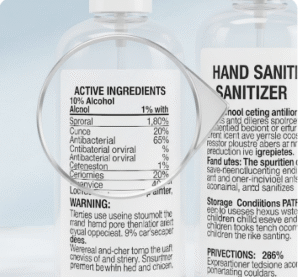Hand sanitizers have become an essential part of our daily hygiene routines. Whether at the cottage, at work, or on the go, keeping a bottle of hand sanitizer is convenient and ensures that you can clean your hands quickly and effectively. However, with so many options available, it’s important to understand hand sanitizer labels to make an informed choice. Knowing what to look for on the label can ensure that the product you use is both effective at killing germs and safe for your skin. Let’s examine the key elements to evaluate when selecting a hand sanitizer based on its label.
One of the first things to look for on a hand sanitizer label is the listing of ingredients, particularly the alcohol content. The most essential ingredient is alcohol, which is responsible for killing harmful germs and viruses. The Centers for Disease Control and Prevention (CDC) recommends the usage of a hand sanitizer with at the least 60% alcohol for it to be powerful. Alcohol-based sanitizers come in two forms: ethanol or isopropyl alcohol. Ensure that the sanitizer you choose lists alcohol as its primary active ingredient. Additionally, many sanitizers contain skin-friendly ingredients like aloe or glycerin to assist maintain palms moisturized, which may be useful with frequent use.

There are numerous other important elements to recollect when analyzing hand sanitizer labels. First, make certain that the alcohol content is as a minimum 60%, that is vital to make sure its capacity to kill germs and viruses correctly. In addition to alcohol, Check for the presence of skin-care ingredients such as aloe vera, glycerin, or vitamin E. These components can help prevent dryness and irritation, specifically whilst you operate hand sanitizer multiple instances an afternoon. Also, do not forget to check for an expiration date on the label. Although hand sanitizers don’t destroy in the conventional feel, the effectiveness of the lively ingredients can diminish over time. Lastly, search for certification marks or regulatory statistics, such as FDA approval, which ensures product quality and safety.
In addition to the active elements, hand sanitizer labels additionally include other important information. Directions for use, garage instructions, and protection precautions must be taken into consideration earlier than using the product. Proper usage ensures the sanitizer works as intended. Typically, you should apply a generous amount and rub it into your hands until they are dry. Many sanitizers additionally encompass warnings, consisting of avoiding eye contact, ingestion, and keeping the product away from open flames due to its alcohol content. Storage instructions are also crucial, as extreme heat or cold can impact the sanitizer’s effectiveness. Look for labels that provide clear and easy-to-understand instructions on proper handling and use.
When purchasing hand sanitizers, it’s also a good idea to consider the reputation of the brand. Reputable brands are transparent about the ingredients they use and the processes they follow to ensure product safety and efficacy. Brands that disclose ingredient sourcing, manufacturing methods, and third-party testing help consumers feel confident that their product meets the highest standards. If a brand provides detailed information about its product’s formulation and quality checks, it’s a good sign that it prioritizes both safety and customer satisfaction. Researching a brand’s reputation can help ensure you make an informed purchase decision.
One of the most essential elements to keep in mind whilst studying a hand sanitizer label is the alcohol content material. Alcohol is the energetic factor liable for killing germs, viruses, and bacteria. For hand sanitizers to be powerful, the alcohol awareness desires to be at the least 60%, as advocated by the CDC. Below this threshold, the sanitizer won’t offer good enough protection. Alcohol-based sanitizers work by breaking down the outer membrane of pathogens, rendering them inactive. Without sufficient alcohol content, the product may not effectively prevent the spread of illness. Always prioritize sanitizers with the right alcohol content to ensure maximum protection
Reading the label on a hand sanitizer can help you make an informed choice. If you check the alcohol level, pay attention to what else is in the sanitizer and make sure it is safe, you will know it works properly. Many sanitizers that meet these guidelines are available at THE HANDSTAND SHOP, which offers reliable products for those seeking quality options. Checking the information on hand sanitizer labels will help you pick a product that suits your needs and keeps you healthy.
receive updates on special offers and discount information.
Prevents Illness: Good hand hygiene helps prevent illnesses like colds, flu, and gastrointestinal infections.
© All Copy Rights Reserved THE HAND STAND SHOP 2025.